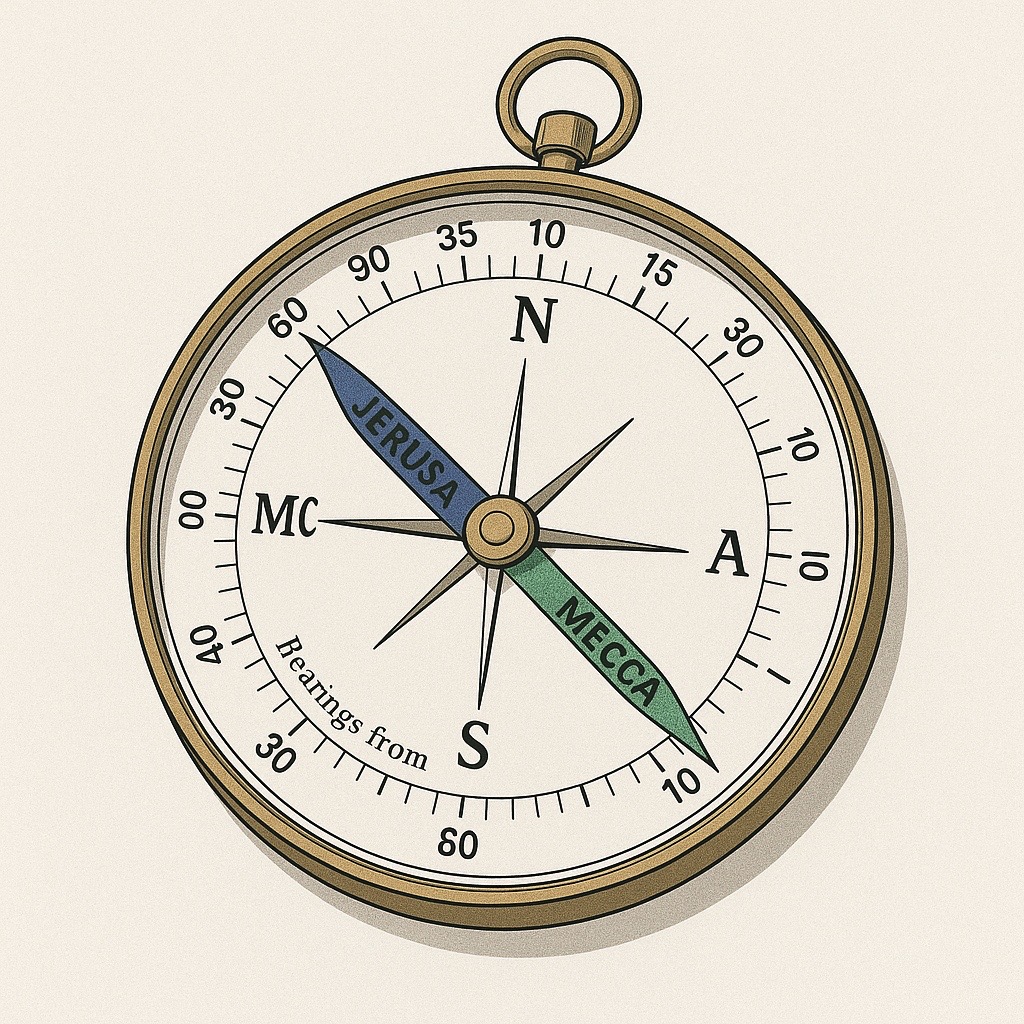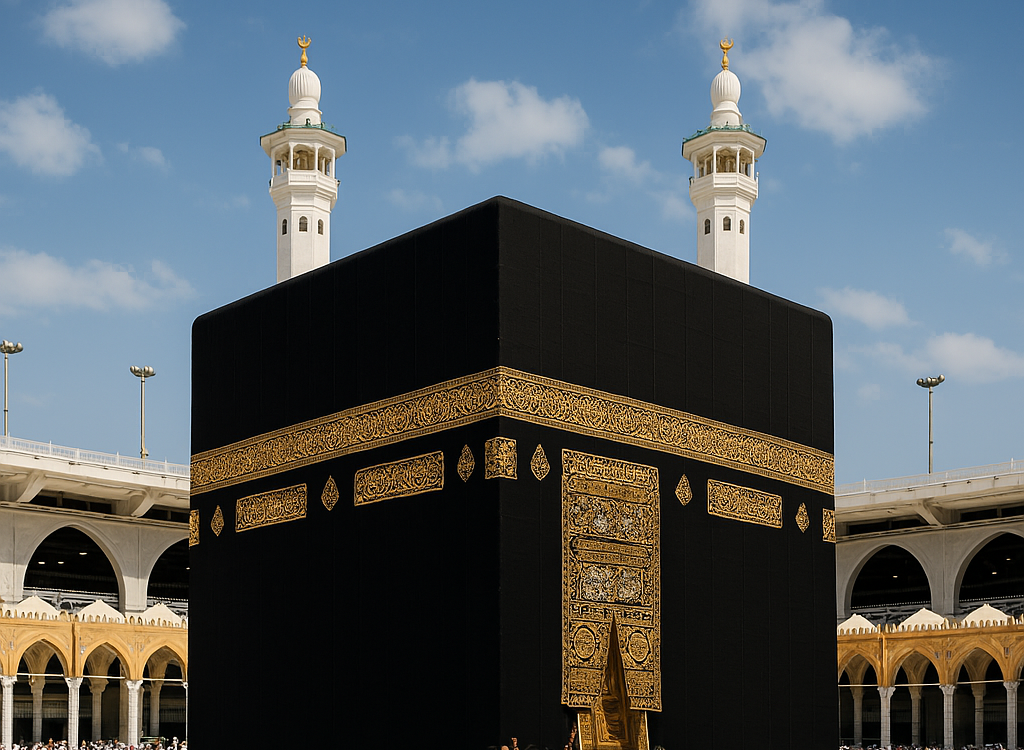
From Baitul Maqdis to Kaaba: Islam’s Pivotal Qiblah Transition
One of the most significant moments in early Islamic history is the change of the Qiblah — the direction Muslims face during prayer — from Jerusalem to the Kaaba in Makkah. This pivotal shift not only redefined Islamic worship but also profoundly influenced the social, political, and religious dynamics of the emerging Muslim community. This article explores how this divine command affected early Muslim community relations, shaped a distinct Muslim identity, and laid the foundation for the unity and growth of the Muslim Ummah. Additionally, it examines the fiqh (Islamic jurisprudence) rulings related to the Qiblah change and its impact on Muslim worship practices
The Original Qiblah: Facing Jerusalem
When the Prophet Muhammad ﷺ first received the command to establish the ritual prayer (Salah), the direction of prayer was towards Jerusalem — a city already sacred to the People of the Book (Jews and Christians). This initial direction established a spiritual continuity with earlier monotheistic traditions, symbolising Islam’s link to the prophetic legacy of Ibrahim (Abraham), Musa (Moses), and Isa (Jesus).
Facing Jerusalem helped early Muslims align themselves with the established Abrahamic faiths, reinforcing the message that Islam was a continuation and culmination of the same divine monotheistic tradition. This connection also helped the Prophet ﷺ in Medina, where the Muslim community lived alongside Jewish tribes, many of whom prayed facing Jerusalem.
Table of Contents
The Divine Command to Change the Qiblah
Approximately 16 to 17 months subsequent to the Prophet’s relocation (Hijrah) to Medina, the Qiblah was altered from Jerusalem to the Kaaba in Makkah. This alteration was not a human choice but a clear divine directive, as articulated in the Quran: “We have certainly observed your gaze, [O Muhammad], towards the heavens, and We will undoubtedly direct you to a Qiblah that will satisfy you.” “Therefore, direct your face towards al-Masjid al-Haram…”Surah Al-Baqarah, verse 144
“Qur’an 2:144 Revealed: The Eternal Shift From Jerusalem to Makkah”
This directive initiated a new era in Islamic devotion, orienting Muslims towards the Kaaba, the hallowed edifice constructed by Prophet Ibrahim and his son Ismail. The Kaaba possesses profound spiritual and historical importance, representing the primordial edifice of monotheistic devotion and reinforcing Islam’s Arabian heritage.

Strengthening Muslim Identity and Unity
The change of the direction was a powerful step in forging a distinct Muslim identity. Before this, facing Jerusalem linked Muslims symbolically with Jews and Christians. By redirecting the direction to the Kaaba, Islam asserted its unique identity and independence.
The Kaaba became a unifying focal point for Muslims, physically and spiritually connecting them to the legacy of Ibrahim, a patriarch revered in Islam as the model of pure monotheism and submission t
O Allah. This connection solidified the Muslim community’s sense of belonging to a unique religious tradition and fostered unity across diverse tribes and backgrounds.
Political and Social Implications
The change also carried significant political implications. The Jewish tribes in Medina, who had previously seen Islam’s direction of prayer as aligned with their tradition, perceived the shift as a break from shared religious practice. This contributed to increased tensions and eventual conflicts between the Muslims and some Jewish groups.
By establishing a new direction of worship centred on Makkah and the Kaaba, Islam distinguished itself politically and spiritually, asserting the autonomy of the Muslim community in Medina and beyond. It was a declaration that Islam was not merely a continuation but a new religious movement with its sacred centre.
Impact on Early Muslim-Jewish Relations
Facing Jerusalem had symbolised a shared connection with the Jewish faith, and the initial camaraderie between Muslims and Jewish tribes in Medina reflected this. However, the direction change altered the dynamics. The new direction underscored Islam’s distinctiveness, which led to a reevaluation of alliances and community relationships.
While the change itself was divinely ordained, it undeniably influenced the course of inter-community relations in Medina. The shift became one of the markers that delineated the Muslim identity from the Jewish tribes, eventually contributing to political and social separation.
Spiritual Significance of the Kaaba as Qiblah
The Kaaba’s importance is beyond its geographical position. It signifies the inaugural edifice of monotheistic devotion, founded by Prophet Ibrahim and his son Ismail. The Kaaba represents the unity of God (Tawheed) and the common foundation of all Abrahamic religions. Redirecting the Qiblah to the Kaaba connected Muslims worldwide to this spiritual heritage, emphasising submission to the One God and the importance of the Arabian prophetic tradition. It transformed Makkah into the spiritual heart of Islam, a unifying centre for the diverse Muslim Ummah.
Unifying the Growing Muslim Ummah
As Islam spread beyond Medina, having a single, universally recognised direction for prayer was crucial for maintaining unity. The Kaaba, centrally located in the Arabian Peninsula, provided a tangible focal point for Muslims everywhere, whether in distant lands or nearby communities.
This unity in worship helped cultivate a sense of shared purpose and collective identity, crucial for the social cohesion and expansion of Islam as a global faith.
Fiqh of the Qiblah Change
1. Obligation to Face the Qiblah
In Islamic jurisprudence, it is obligatory (wajib) for Muslims to face the Kaaba when performing the five daily prayers. This is based on the Quranic command and the Sunnah of the Prophet ﷺ.
- After the change was revealed, Muslims were required to face the Kaaba in all prayers.
- This applies whether praying individually or in a congregation.
2. Validity of Prayers Facing the Old Qiblah
- Prayers performed before the revelation of the direction change, when facing Jerusalem, are valid.
- However, after the command, prayers must be directed towards the Kaaba.
- Scholars agree that a Muslim who prays facing another direction without excuse is considered negligent.
3. Exceptions and Flexibility
- If a Muslim genuinely cannot determine the Qiblah direction, or if facing the Kaaba causes harm, hardship, or confusion, then there is leniency.
- The Prophet ﷺ himself advised to do the best effort to face the Qiblah.
4. Changing Qiblah During Prayer
- If a person realises mid-prayer that they were facing the wrong direction, scholars differ:
- Some say they should turn immediately towards the correct Qiblah and continue.
- Others say the prayer remains valid if the mistake was genuine and unintentional.
- Some say they should turn immediately towards the correct Qiblah and continue.
5. Rulings on Facing the Qiblah Outside Prayer
- While facing the Qiblah is obligatory during prayer, outside prayer, it is recommended (mustahabb) but not obligatory.
- Muslims are encouraged to face the Qiblah during various acts of worship or remembrance, but are not sinful if they do not.
Conclusion
The change of the Qiblah from Jerusalem to the Kaaba was much more than a physical reorientation. It was a divine decree that shaped early Muslim community relations, strengthened Muslim identity, and carried significant spiritual and political implications. From a fiqh perspective, facing the Qiblah is a fundamental requirement in Islamic prayer, emphasising unity and submission to Allah.
Understanding the historical, social, and legal dimensions of the Qiblah change enriches our appreciation of Islam’s formative years and the wisdom behind its rituals.
FAQs: The Qiblah Change from Jerusalem to the Kaaba
1. What is the Qiblah in Islam?
The Qiblah is the direction Muslims face during prayer (Salah). It is currently fixed towards the Kaaba in Makkah, the holiest site in Islam.
2. Why was the Qiblah originally towards Jerusalem?
Initially, Muslims prayed facing Jerusalem to establish a spiritual connection with earlier monotheistic faiths—Judaism and Christianity—and link Islam to the prophetic tradition of Ibrahim, Musa, and Isa.
3. When and why did the Facing the Kaaba symbolises unity, submission to Allah, and connection to the monotheistic heritage of Ibrahim. It also reminds Muslims of their shared faith and direction in life. change to the Kaaba?
About 16-17 months after the Prophet Muhammad ﷺ migrated to Medina, Allah commanded him through the Quran to change the direction to the Kaaba in Makkah (Surah Al-Baqarah 2:144). This was to establish a distinct Muslim identity and reconnect Muslims with the legacy of Ibrahim.
4. How did the direction change affect early Muslim relations with Jewish tribes?
The change emphasised the distinct identity of Muslims, causing some tension with Jewish tribes in Medina who previously shared Jerusalem as a common Qiblah. It contributed to religious and political separation.
5. Is facing the direction obligatory in Islam?
Yes, facing the direction during the five daily prayers is obligatory (wajib) for every Muslim. It unifies the Ummah (community) in worship.
6. What if someone prays facing the wrong direction?

If the mistake is unintentional or due to genuine ignorance, the prayer is valid. However, knowingly praying away from the direction without excuse is considered sinful and invalid.
7. Can the Qiblah be changed again in the future?
No, the Qiblah change to the Kaaba is a final divine command in Islam and is not subject to change.
8. Is it obligatory to face the direction outside of prayer?
No, facing the Qiblah outside prayer is recommended (mustahabb), such as during du’a (supplication) or dhikr (remembrance), but not obligatory.
9. How do Muslims determine the Qiblah today?
Muslims use various methods such as compasses, Qiblah apps, astronomical calculations, and mosques’ indications to find the accurate direction toward the Kaaba.
10. What is the spiritual significance of facing the Kaaba?
Facing the Kaaba symbolises unity, submission to Allah, and connection to the monotheistic heritage of Ibrahim. It also reminds Muslims of their shared faith and direction in life.
